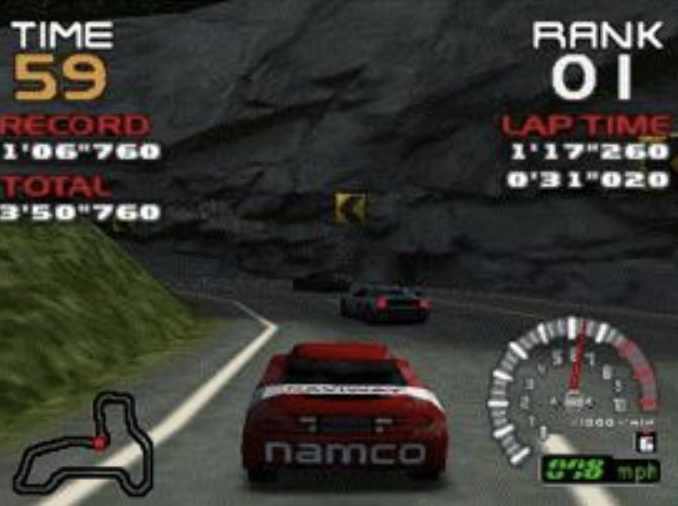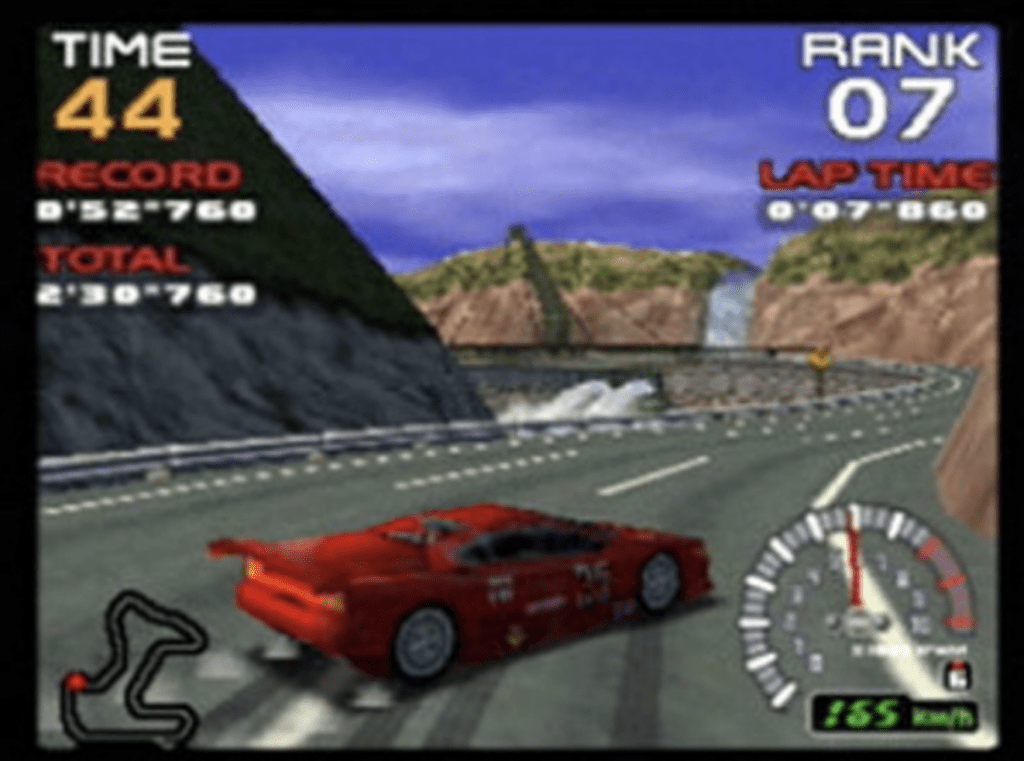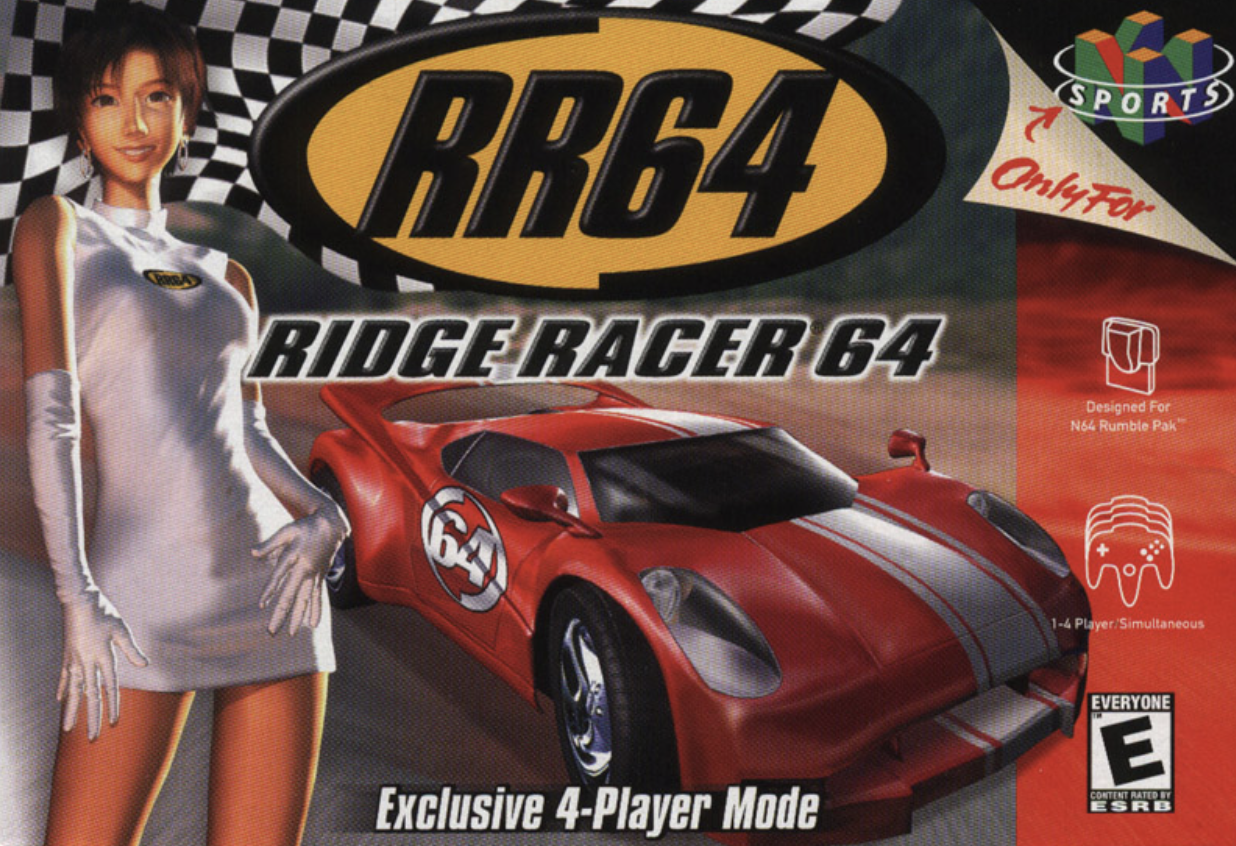Ridge Racer on a Nintendo console!? More than once on Racing Game History, we have looked to Namco’s Ridge Racer series as both an important graphical leap that heralded the advent of 3D, polygon-based graphics and as a driving force (pun intended) for Sony’s entry into the home video game console market. And while Ridge Racer was never a first-party Sony game, you’d be forgiven for thinking so. There’s no doubt that the PlayStation port of the original sold a lot of Sony’s debut console back in the mid-90s.
Stranger still, Ridge Racer 64 would come to us not directly from Namco themselves (though they did support the game’s development), but by a first-party Nintendo developer called NST or Nintendo Software Technology. Ridge Racer 64 was NST’s second release after Bionic Commando Elite Forces for the Game Boy Color which was itself another sequel in a franchise owned by another video game developer, Capcom. NST is still active today with their most recent title, a remake of Mario vs. Donkey Kong for the Nintendo Switch published just this year.
So how does NST’s take on Namco’s classic drift racing series stack up to the original games? For starters, while Ridge Racer 64 does feature a few original tracks, the rest of the courses are made up of tracks from the original home console release on PlayStation and its direct sequel Ridge Racer Revolution (1995)–albeit with certain graphical changes like moving courses from a beach setting to the Pacific Northwest. All in all, there are twenty tracks to power drift through.
Ridge Racer 6 features 32 playable cars with four available from the start, twenty unlocked through the game’s “car attack mode” which featured races against more difficult opponents, and the final eight unlocked by meeting certain conditions in the game. The “Blinky” car (a reference to one of the Pac-Man ghosts) became available after the player drove 99 laps in “time attack” mode.


One definite advantage Ridge Racer 64 had on its PlayStation predecessors was multiplayer mode. Up to four drivers could race each other thanks to the N64’s four controller ports and Nintendo’s focus on multiplayer modes in many of the game in the console’s library. So if you ever wanted to drift race your friends through the original game’s tracks, the N64 is a sure bet.
Ridge Racer 64 sticks out as an odd, but welcomed appearance for the series that had accelerated into our speed-addicted hearts thanks in no small part to the original PlayStation. The game would hit the track once again in 2004 on the Nintendo DS as Ridge Racer DS with a new control scheme that utilized the handheld system’s touch screen.

